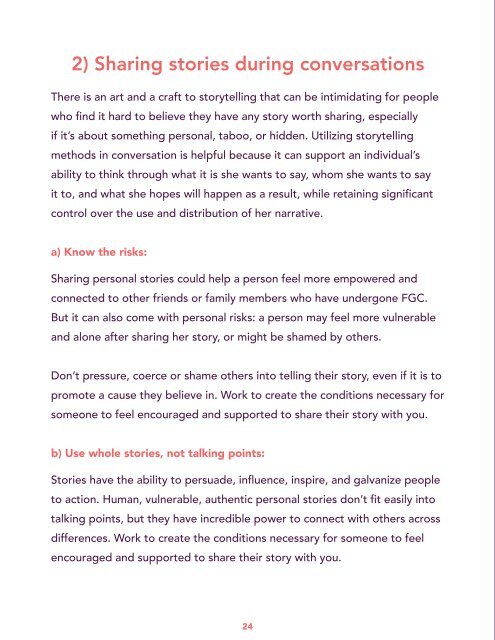Sahiyo Communication Guide
You also want an ePaper? Increase the reach of your titles
YUMPU automatically turns print PDFs into web optimized ePapers that Google loves.
2) Sharing stories during conversations<br />
There is an art and a craft to storytelling that can be intimidating for people<br />
who find it hard to believe they have any story worth sharing, especially<br />
if it’s about something personal, taboo, or hidden. Utilizing storytelling<br />
methods in conversation is helpful because it can support an individual’s<br />
ability to think through what it is she wants to say, whom she wants to say<br />
it to, and what she hopes will happen as a result, while retaining significant<br />
control over the use and distribution of her narrative.<br />
a) Know the risks:<br />
Sharing personal stories could help a person feel more empowered and<br />
connected to other friends or family members who have undergone FGC.<br />
But it can also come with personal risks: a person may feel more vulnerable<br />
and alone after sharing her story, or might be shamed by others.<br />
Don’t pressure, coerce or shame others into telling their story, even if it is to<br />
promote a cause they believe in. Work to create the conditions necessary for<br />
someone to feel encouraged and supported to share their story with you.<br />
b) Use whole stories, not talking points:<br />
Stories have the ability to persuade, influence, inspire, and galvanize people<br />
to action. Human, vulnerable, authentic personal stories don’t fit easily into<br />
talking points, but they have incredible power to connect with others across<br />
differences. Work to create the conditions necessary for someone to feel<br />
encouraged and supported to share their story with you.<br />
24



